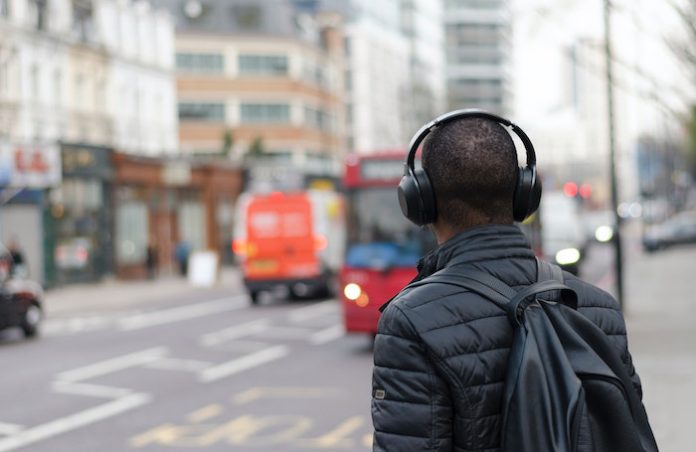Can you imagine one day not being able to hear anymore? Our ability to hear is one of our most important senses, as it allows us to communicate with others, listen to music, and participate in verbal conversations.
However, those of us who are blessed with this ability sometimes take it for granted with how often we use it. What’s worse is that some people are unaware of the fact that we’re surrounded with hazardous levels of noise on a daily basis, and constant exposure could leave us vulnerable to noise-induced hearing loss.
That’s why this article will serve as a guide that will help protect your hearing with the usage of proper hearing protection. In addition, it’ll show you the things you should take note of when picking out the most appropriate hearing protection device (HPD).
Understand Noise-Induced Hearing Loss
As the name suggests, noise-induced hearing loss is the result of prolonged exposure to hazardous or loud levels of noise. When exposed to high levels of noise, the sensory hair cells inside the ear can become damaged, which can result in hearing loss.
It’s obvious that exposure to a short burst of loud noise such as a gunshot or firecracker can damage the ear, but constant exposure to loud sounds happens more often and is the main reason for hearing loss.
Although noise-induced hearing loss is the most common type of hearing loss, it is definitely possible to prevent it from happening.
Why You Need Hearing Protection
The best type of hearing protection we can provide is by simply avoiding places or environments with hazardous levels of noise. When we eliminate the threat by limiting our exposure, then there’s no risk of hearing loss at all.
But realistically, this isn’t always possible. The fact is that there are many everyday situations where we can be exposed to high levels of noise (such as listening to music too loudly or the roar of a motorcycle engine as it zooms by). In addition, many people have jobs where their workplace is a high-decibel environment due to heavy machinery and equipment.
That’s why the next best thing is to make use of HPDs, as these are our last line of defense when exposure to hazardous levels of noise is unavoidable. Whether you’re a construction worker operating heavy machinery on-site or a music fan attending your first rock concert, HPDs can definitely help prevent unnecessary hearing loss.
Determine the Best Hearing Protection Device
Opting to use HPDs is highly recommended, and oftentimes required in certain situations, such as at the workplace. However, picking out the right HPD can be tricky, especially because there are a lot of options available.
From passive noise-canceling headphones to Bluetooth hearing protection devices with active noise isolation, there’s definitely an HPD out there that is most suitable for your needs. In general, there are two types of HPDs: ear plugs and ear muffs.
Ear plugs
These are small HPDs that are designed to be inserted inside the ear canal. This forms a reliable seal which blocks out some level of outside noise from entering the ear. There are different subtypes of ear plugs, but they can either be disposable or designed for reusability.
Ear plugs are smaller and lighter than ear muffs. This makes them portable enough that you can basically bring them wherever you go without worrying about storage space. They’re also generally cheaper (especially the disposable kind), as you can buy these in bulk.
In addition, due to their small size and the way you insert them inside the ear, they’re more comfortable to wear in hot environments or small spaces. You don’t have to worry about this HPD getting in the way and restricting your overall movement.
However, it’s important to note that ear plugs require a bit more effort to put on, since you’ll need to insert them inside your ears using your clean fingers. Because of their small size, ear plugs are a lot easier to misplace as well.
Ear muffs
On the other hand, ear muffs protect your hearing by creating a noise-reducing seal outside the ears instead of inside the ear canal. It does this by using the clamping force of a headband with ear cups on each end to create a decent seal around the ears.
With ear muffs, they’re a lot easier to put on and take off since all you have to do is lift the ear cups over your head. In addition, because of the fact that ear muffs are meant to be worn outside the ear, there is a high possibility for them to fit more people.
The same pair of ear muffs can be worn by people with varying head shapes and sizes, given that the headband provides an appropriate amount of clamping force.
However, it’s important to note that ear muffs are a lot bigger and heavier than ear plugs, meaning they can easily get in the way of your movement. In addition, because ear muffs are meant to be worn around your ears, it may not be comfortable to wear them for long periods of time, especially in hot and humid environments.
Conclusion
With this information in mind, you should be able to protect your hearing with the use of proper hearing protection. Always remember that the best kind of protection is to limit the overall exposure to loud levels of noise by minimizing the time you spend in high-decibel environments.
But because that’s not always a realistic solution, making use of the most appropriate hearing protection device is the next best thing. If you truly care about your ability to hear, then you’ll have no problems taking that extra step for safety.
Find a Home-Based Business to Start-Up >>> Hundreds of Business Listings.
















































